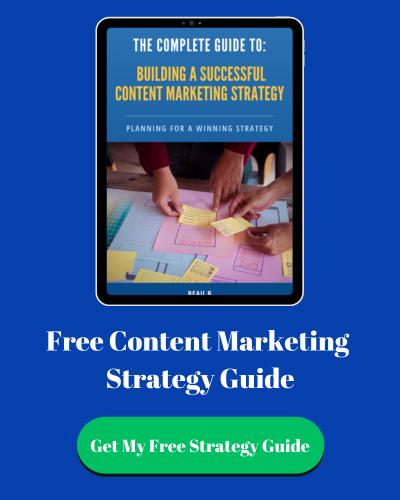In an era where marketing techniques abound, it’s vital for businesses to invest in strategies that offer the best returns. Content marketing has emerged as a formidable player in the digital marketing arena. However, justifying its importance requires understanding its Return on Investment (ROI). In this article, we’ll delve into the measurable benefits of content marketing and how businesses can track their ROI effectively.
What is ROI in Content Marketing?
Simply put, the ROI of content marketing measures the return on every dollar spent on content creation and distribution relative to the revenue it brings in. You can easily track this by seeing your rate of return on content pieces like lead magnets, videos, and blogs. While also dividing it by how much you spent to make it.
Measurable Benefits of Content Marketing
- Increased Website Traffic: High-quality content can significantly boost website visits, leading to more potential conversions.
- Higher Engagement: Engaging content can lead to longer website visit durations and increased interactions, which can further lead to brand loyalty.
- Improved SEO: Quality content can improve a site’s ranking on search engines, making it easier for potential customers to find your business.
- Lead Generation: Content, especially gated content like whitepapers or webinars, can be instrumental in generating qualified leads.
- Increased Sales: Ultimately, the primary goal of any marketing strategy is to drive sales. Effective content marketing can guide prospects through the sales funnel and encourage purchasing decisions.
Tracking ROI of Content Marketing
- Google Analytics: This free tool can be instrumental in tracking website traffic, user behavior, and conversions resulting from your content marketing efforts.
- CRM Systems: Tools like HubSpot or Salesforce can help businesses track leads and sales that stem directly from content marketing initiatives.
- Engagement Metrics: Track metrics like page views, average time spent on the site, and bounce rates to understand how effectively your content is engaging readers.
- Conversion Tracking: Using tools like Google Tag Manager, businesses can track specific actions taken on their website, such as signing up for a newsletter or completing a purchase, to determine the direct results of their content marketing.
- Cost Analysis: To accurately calculate ROI, you need a clear understanding of your content marketing expenses. This includes content creation costs, distribution expenses, and any tools or software used in the process.
- Feedback and Surveys: Regular feedback from your audience can offer qualitative insights into the effectiveness of your content marketing and areas for improvement.
Some Frequently Asked Questions about Content Marketing
1. What is Content Marketing ROI?
Content Marketing ROI is a metric used to measure the efficiency and effectiveness of dollars invested in content marketing activities compared to the revenue these activities bring in.
2. Why is it important to measure the ROI of Content Marketing?
Measuring the ROI ensures that you’re not just producing content for content’s sake. It validates your efforts by showing tangible results and informs future marketing decisions and budget allocations.
3. How does content marketing impact SEO and its ROI?
Quality content plays a crucial role in SEO by attracting backlinks, keeping users engaged (reducing bounce rates), and providing value, which search engines reward by ranking the site higher. Improved SEO can lead to more organic traffic, increasing the ROI of your content marketing efforts.
4. Can I measure ROI for all types of content?
While it’s straightforward to measure ROI for content with direct conversion paths, such as landing pages or product blogs, it might be trickier for brand awareness or educational content. However, with the right tools and indirect metrics, like engagement or lead quality, you can gauge ROI for different content types.
5. How often should I analyze my Content Marketing ROI?
It’s beneficial to do a monthly check-in to make quick adjustments and optimizations. However, a more in-depth analysis should be done quarterly or annually to understand long-term trends and effects.
6. Is there a benchmark ROI for Content Marketing?
It varies widely across industries and the nature of the business. However, a positive ROI indicates your content marketing is profitable. Over time, as your content accumulates and you refine your strategy, you can expect this number to grow.
7. How do I know if my ROI is good?
A positive ROI indicates you’re getting back more than you’re spending. Comparing your ROI to industry benchmarks can provide additional context. However, remember that factors like brand awareness, customer loyalty, and engagement, while harder to quantify, are also valuable returns on your investment.
8. How can I improve my Content Marketing ROI?
Improving ROI involves either increasing the returns or decreasing the investment. Some strategies include optimizing your content for search engines, promoting content across various channels, refining your target audience, and ensuring your content resonates with your audience’s needs and pain points.





